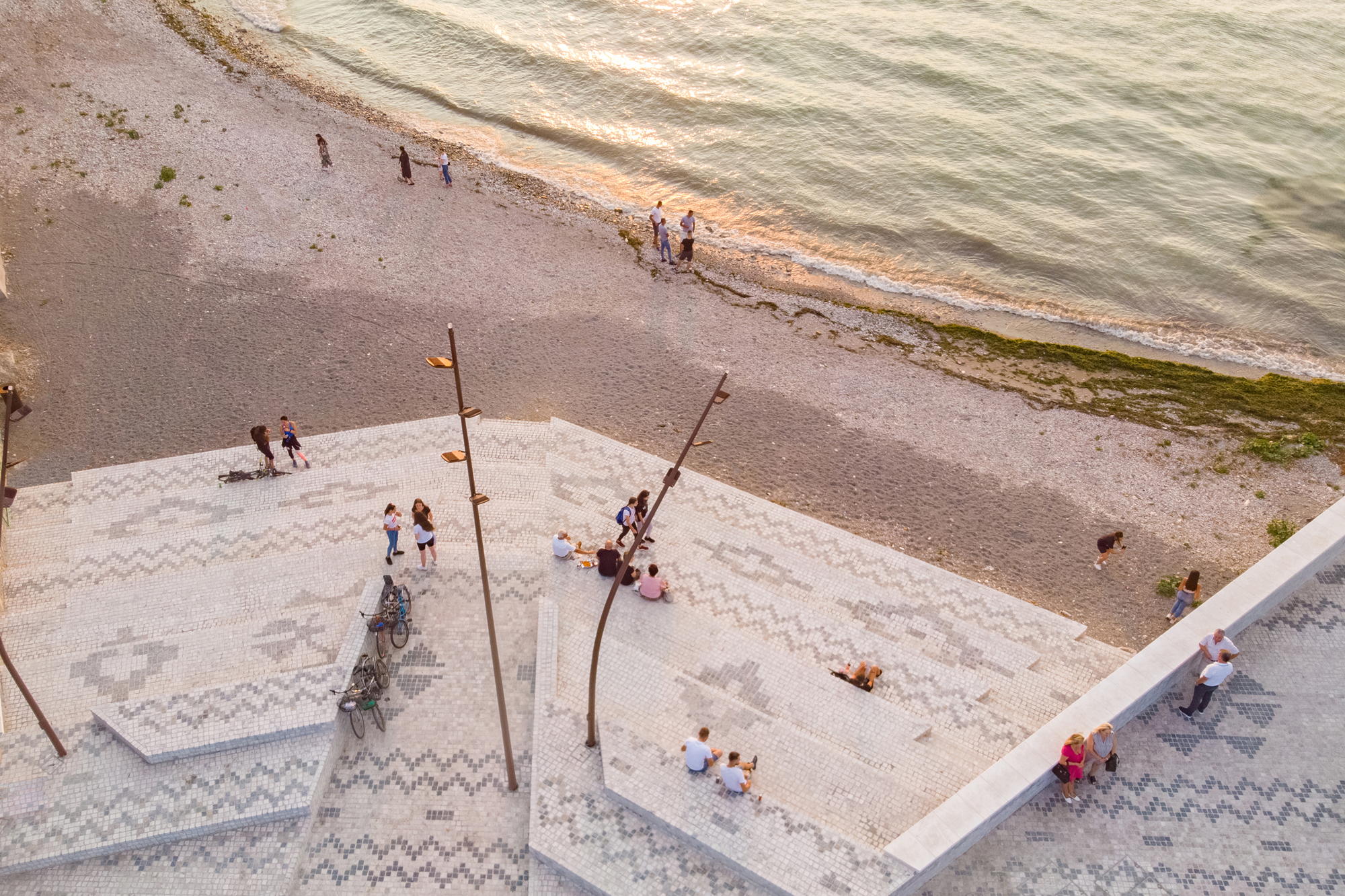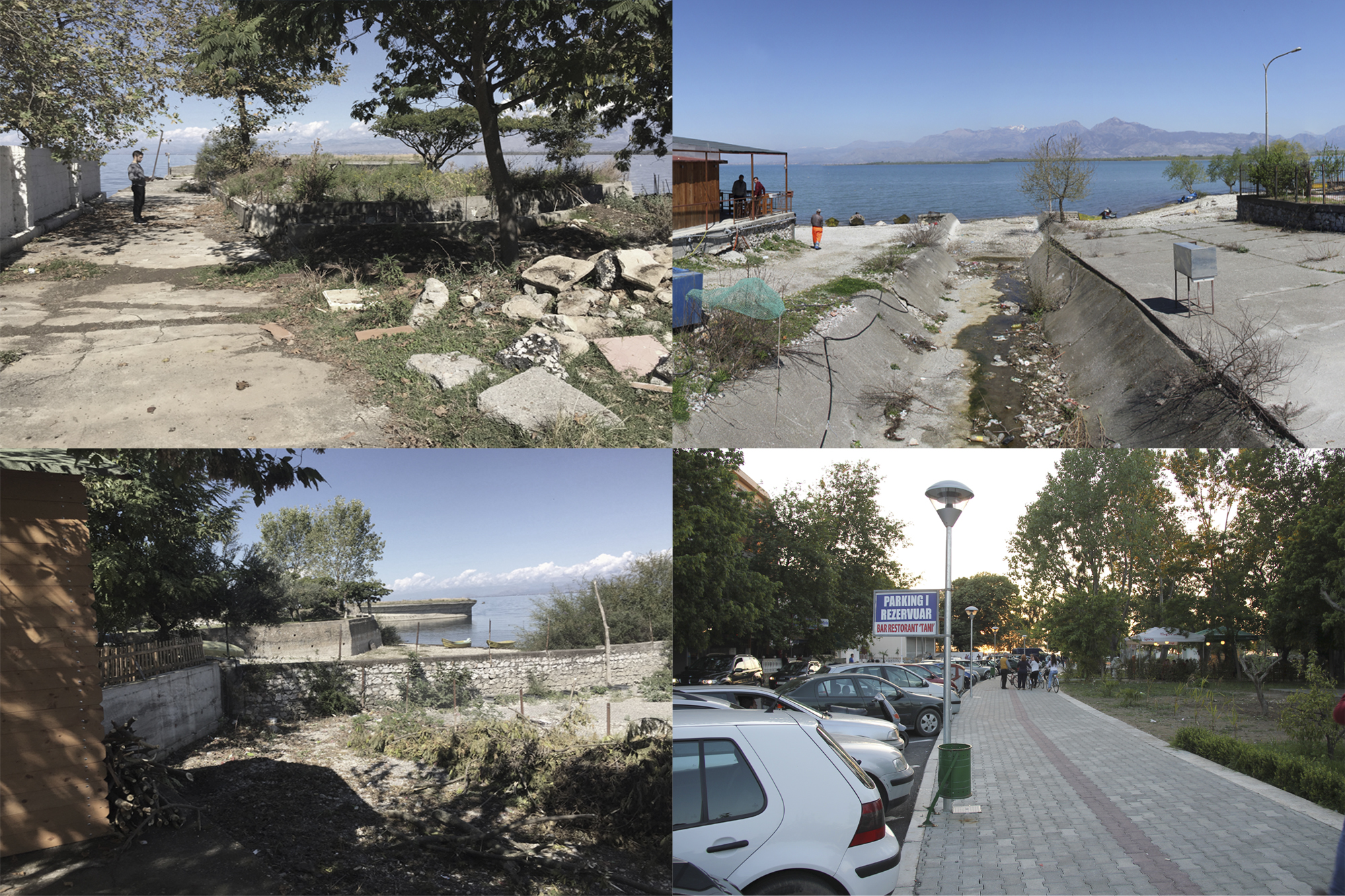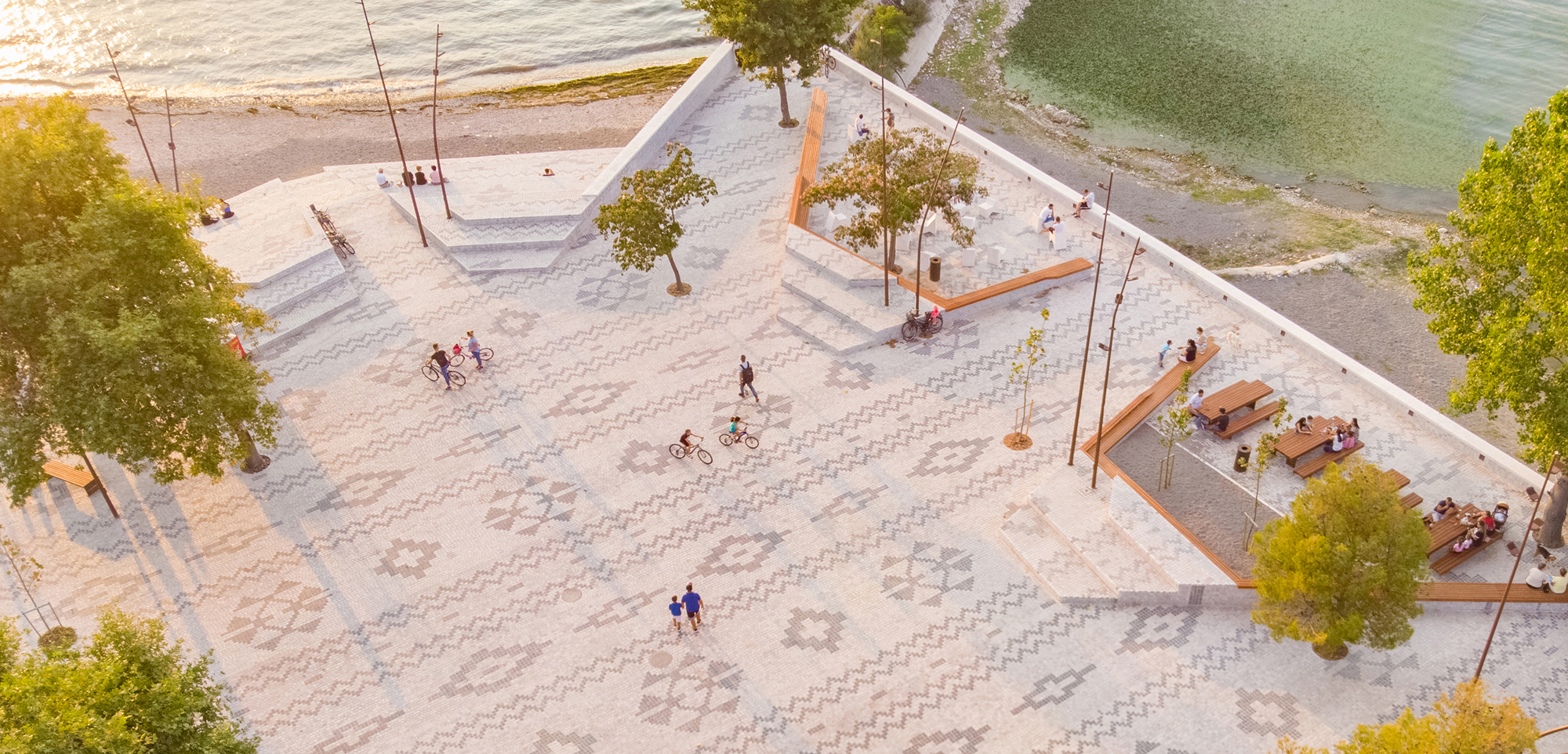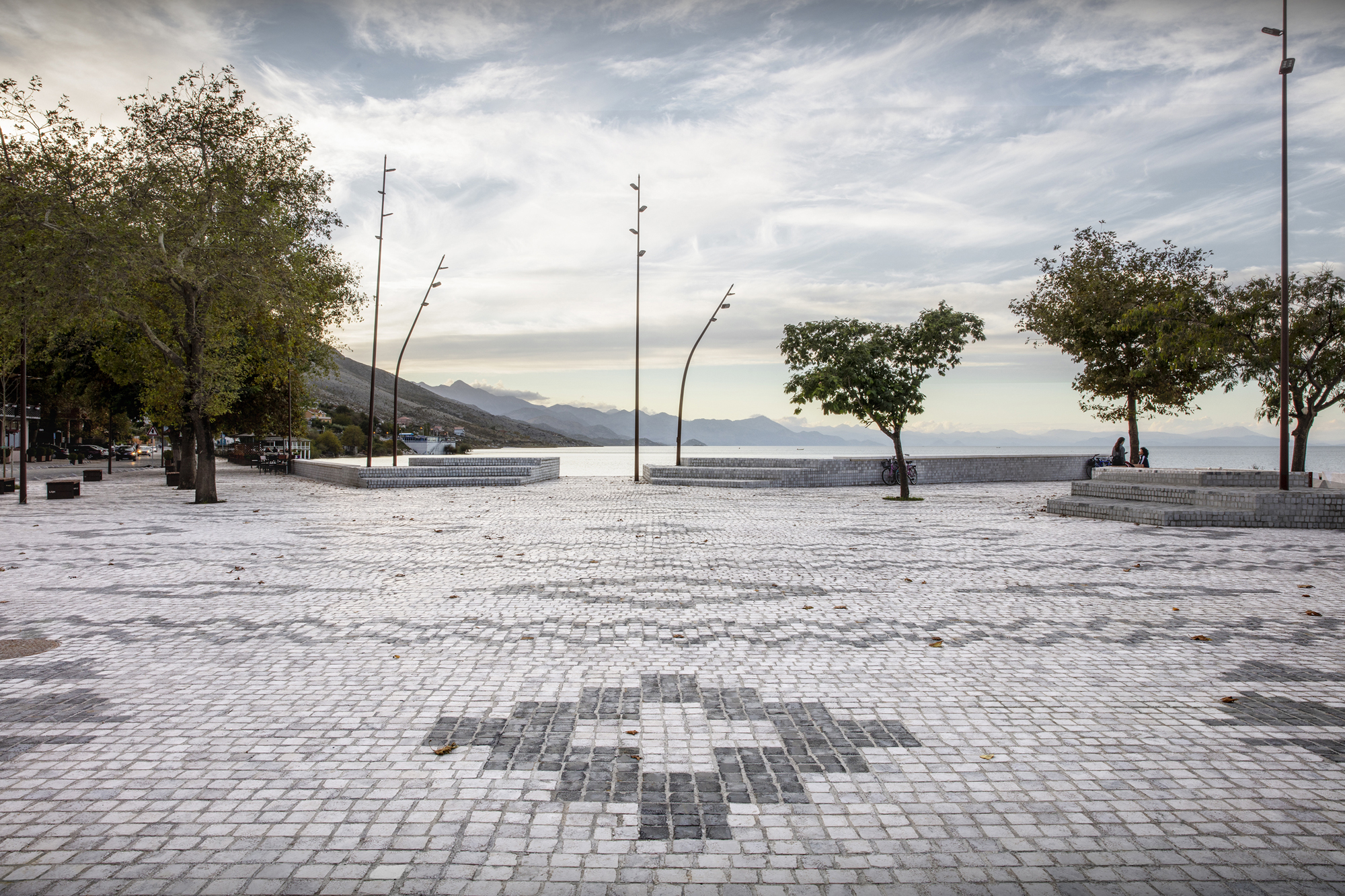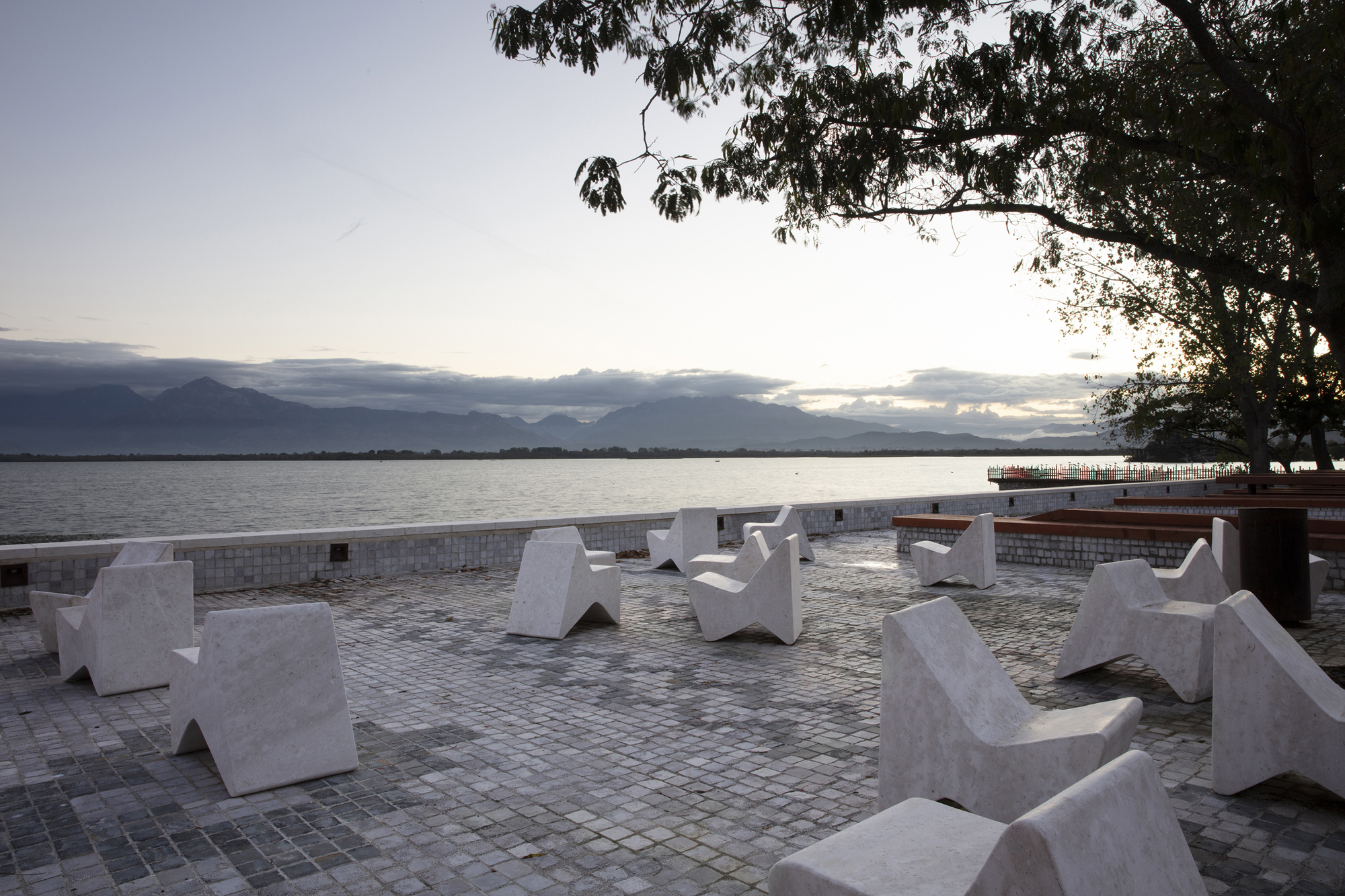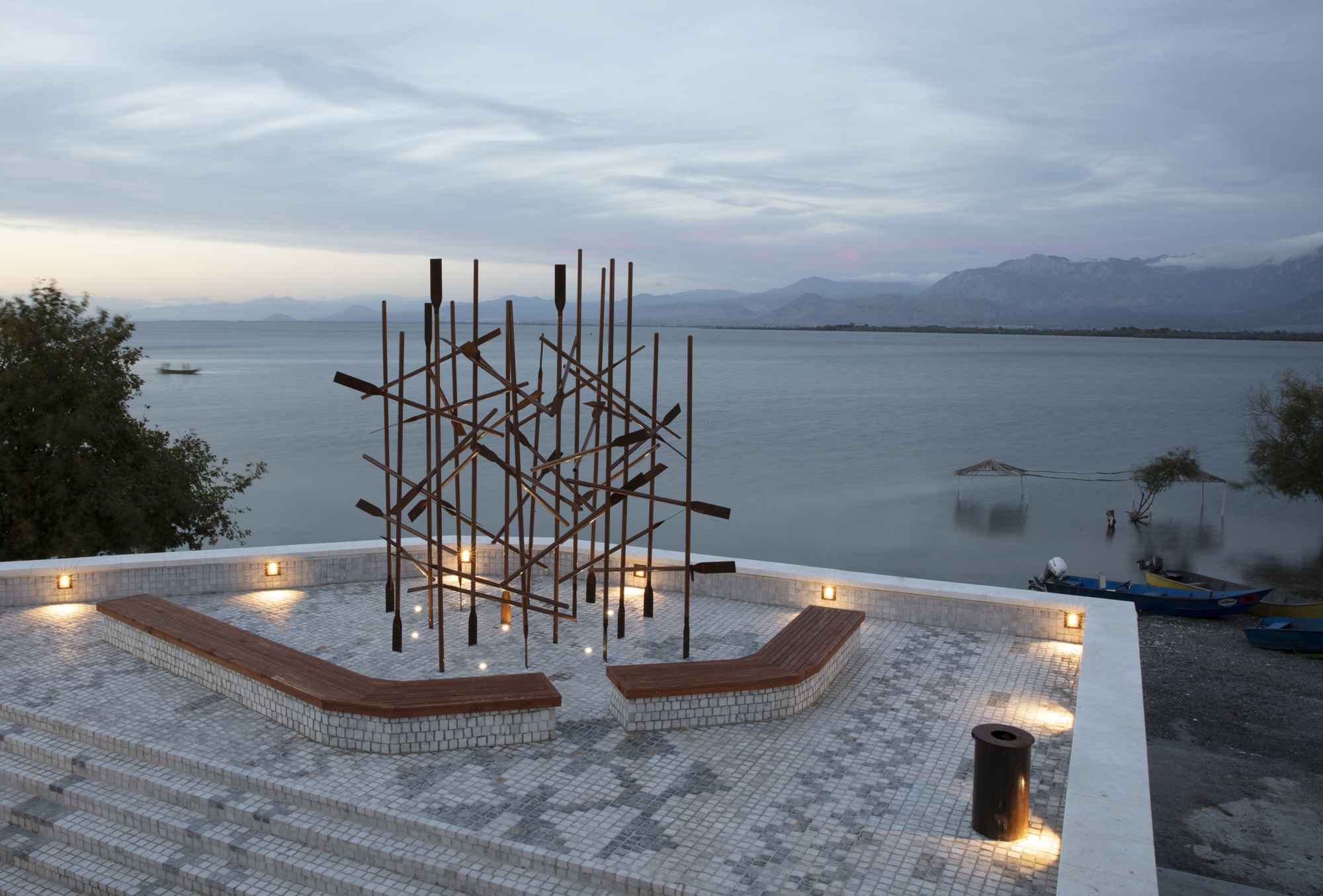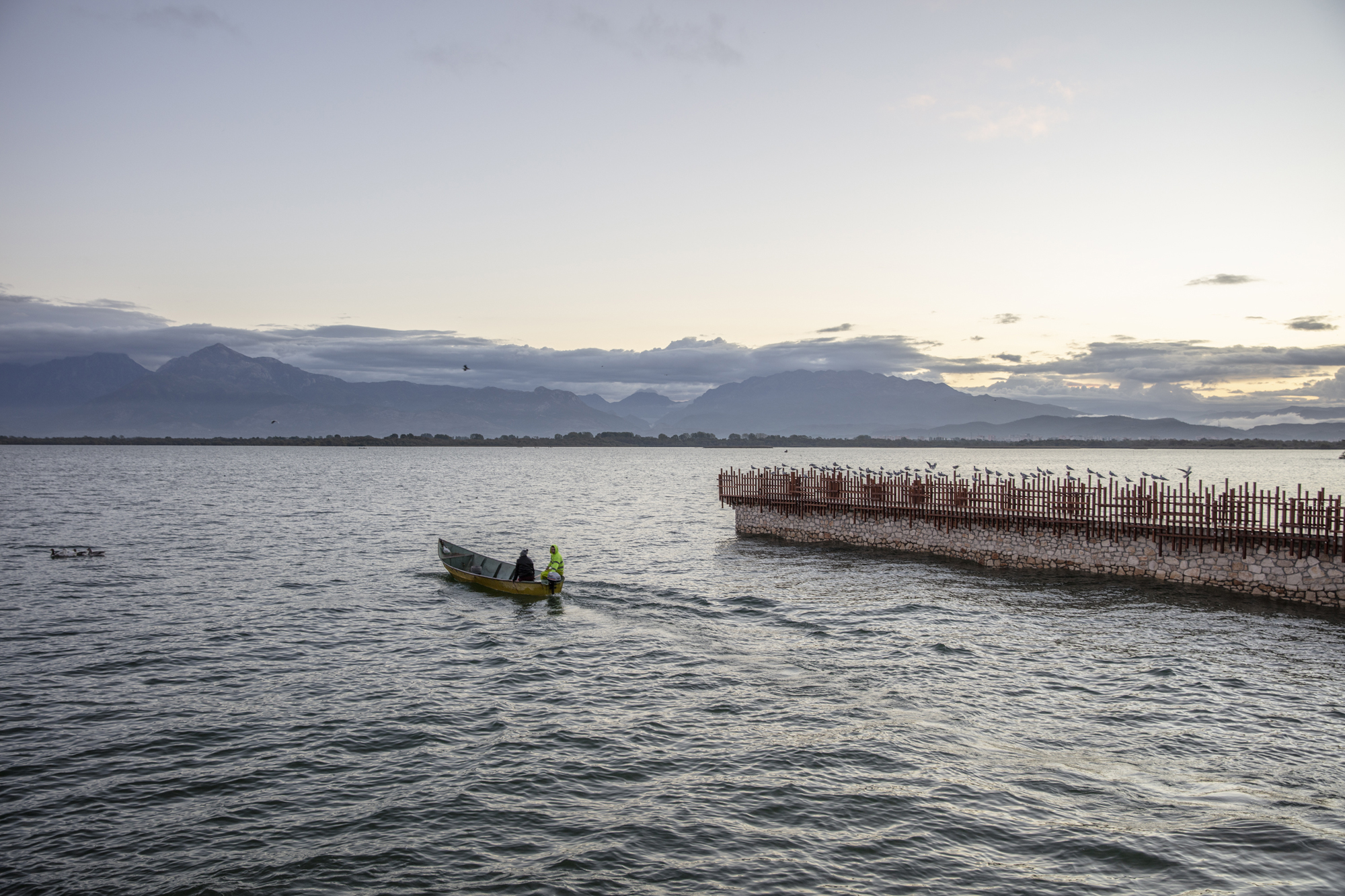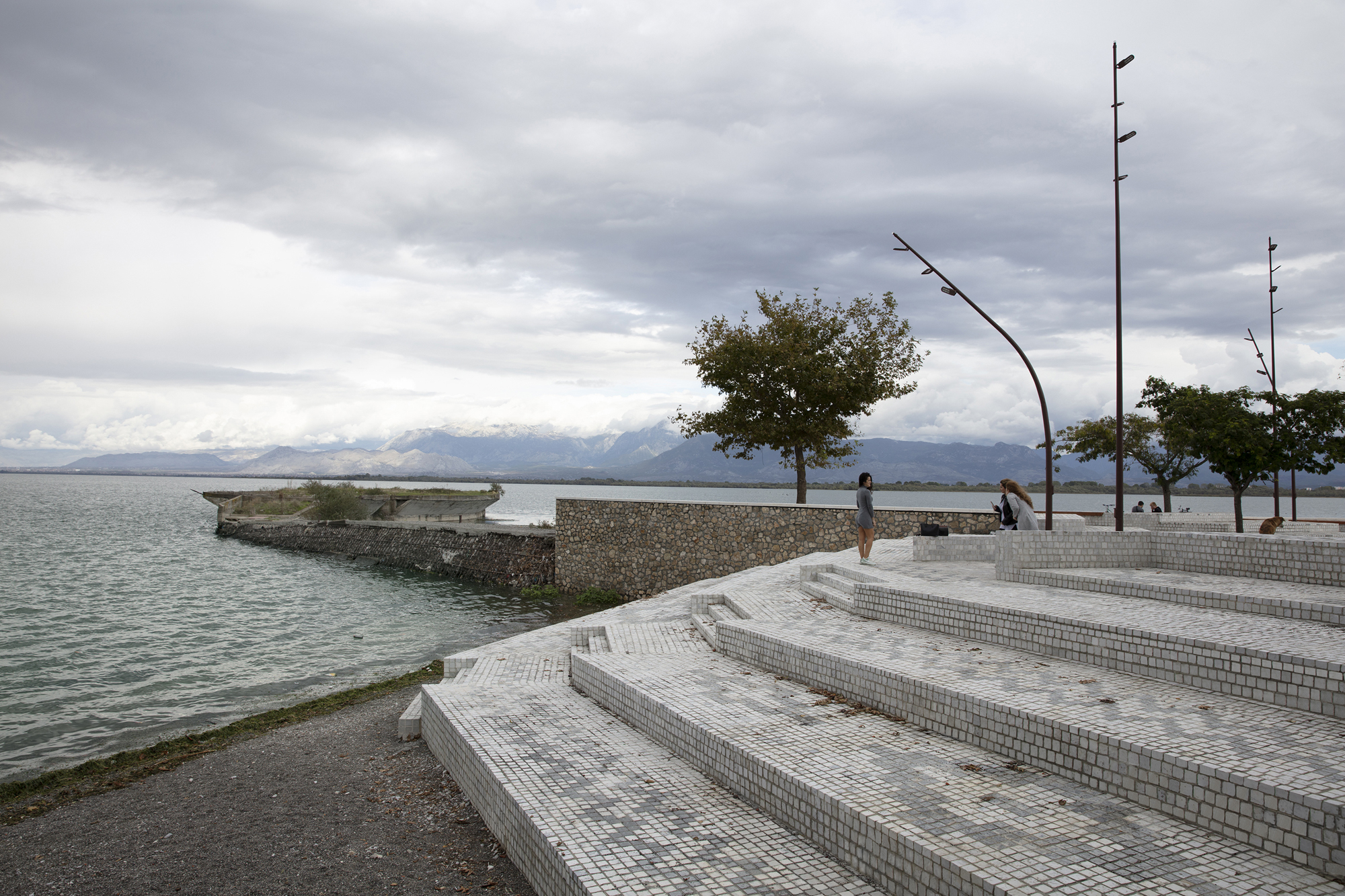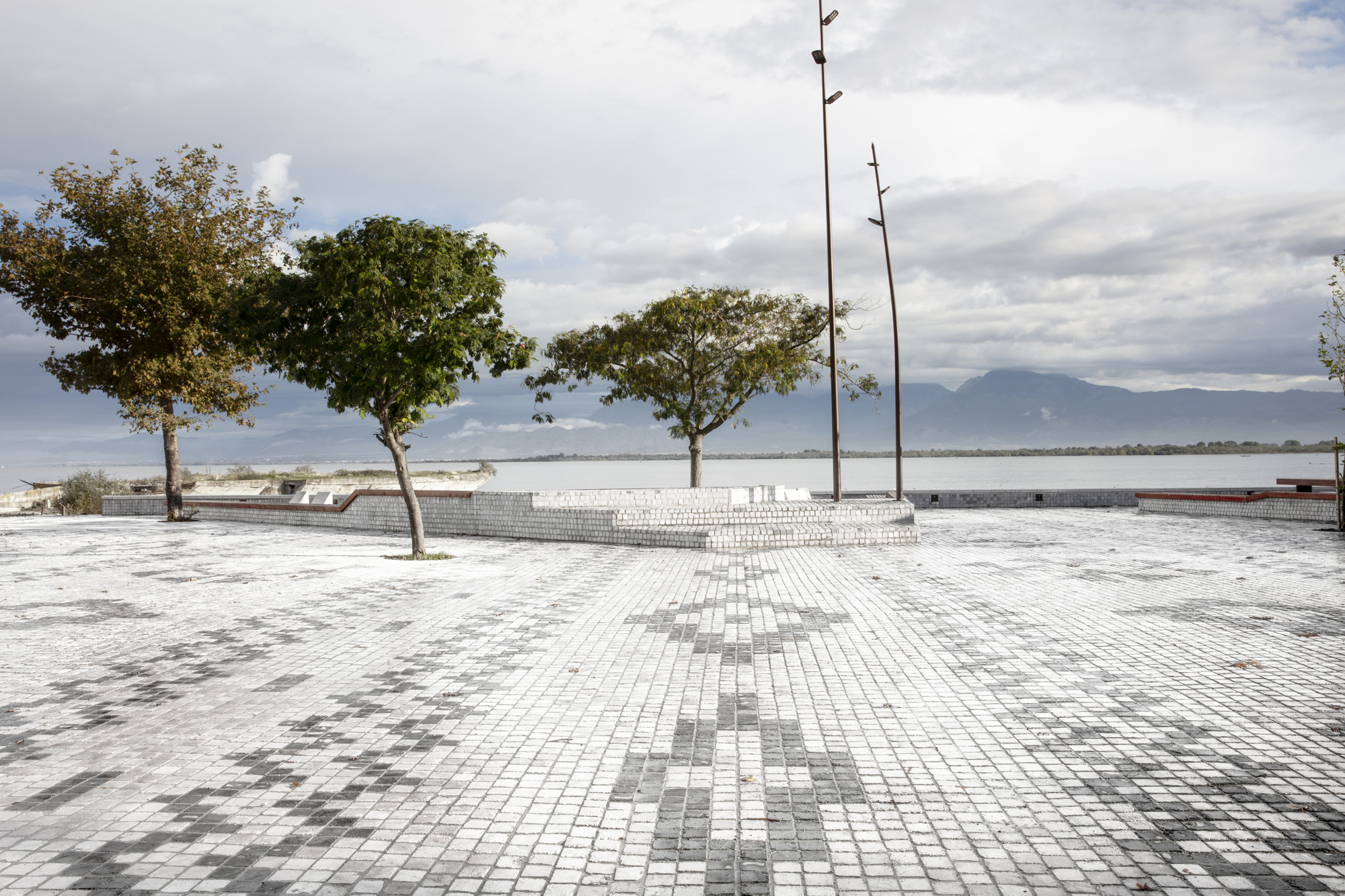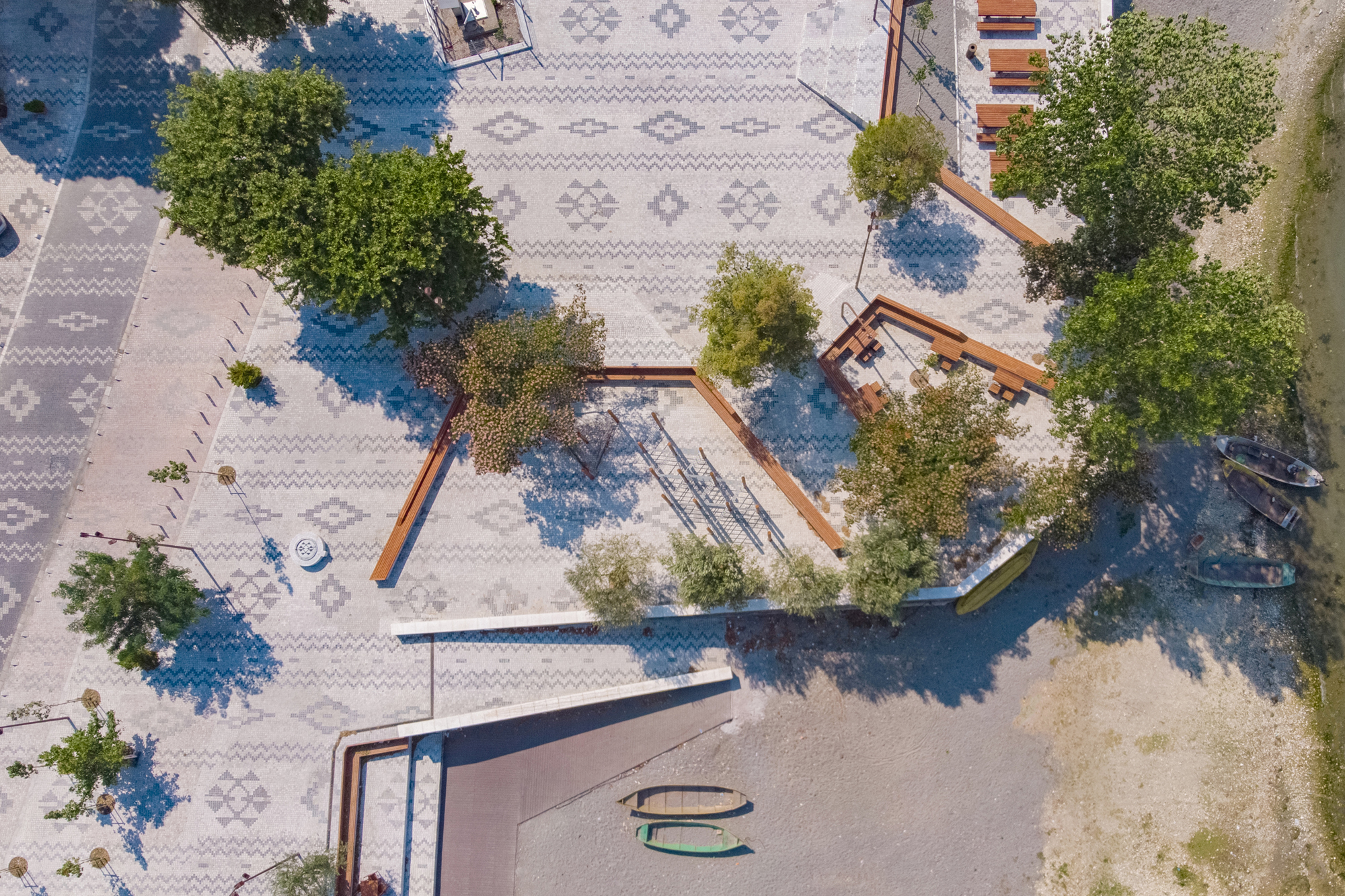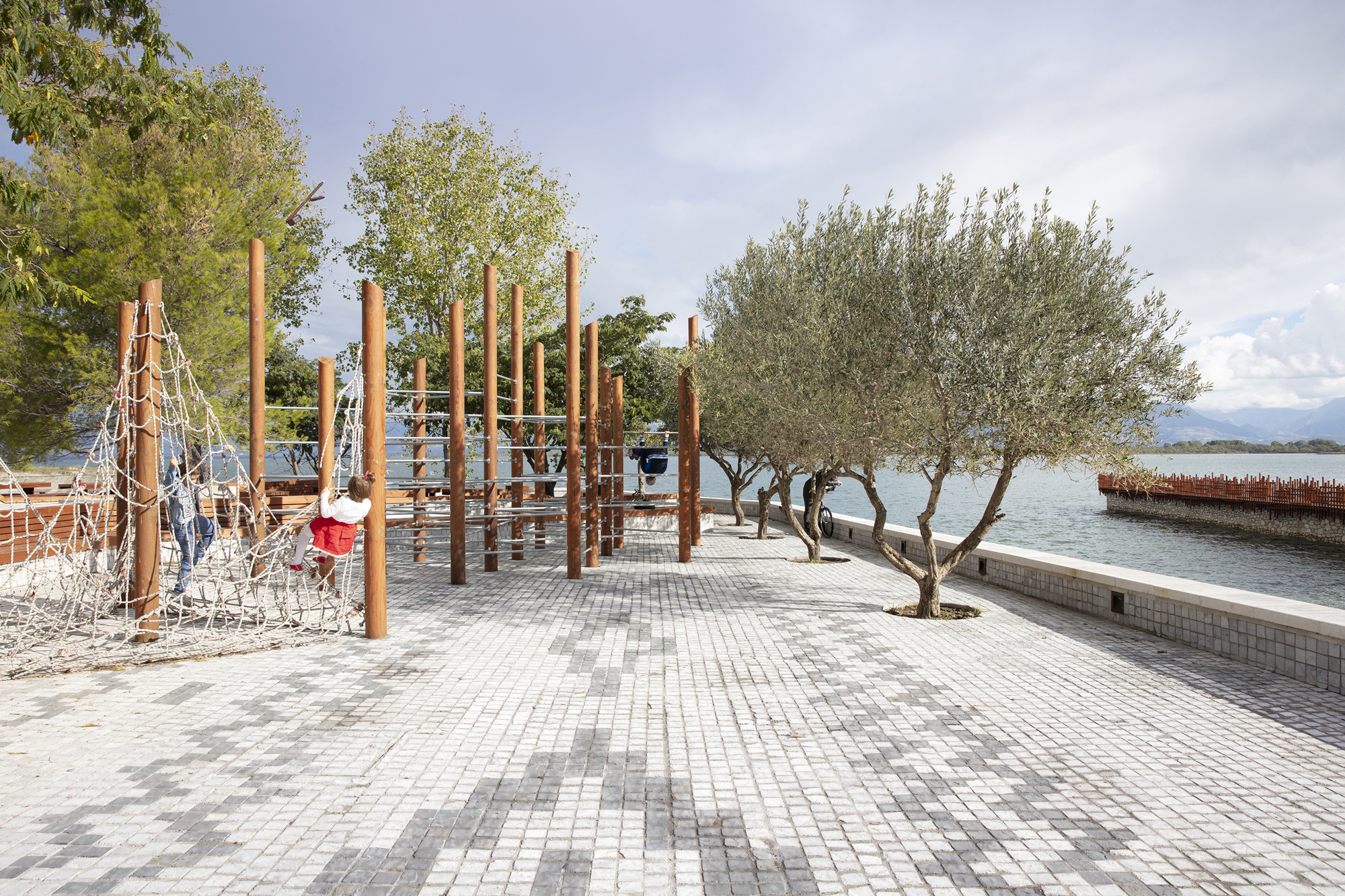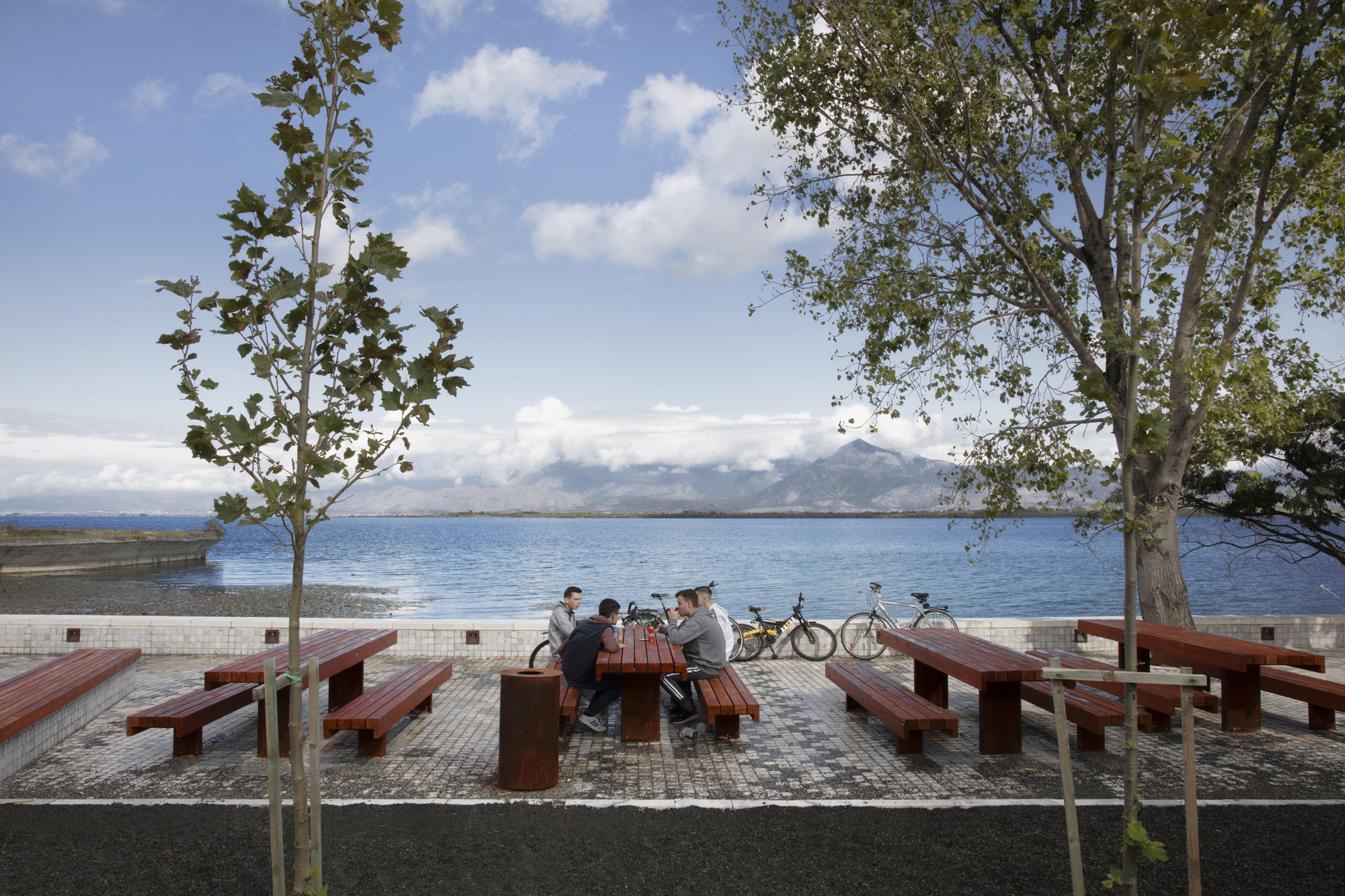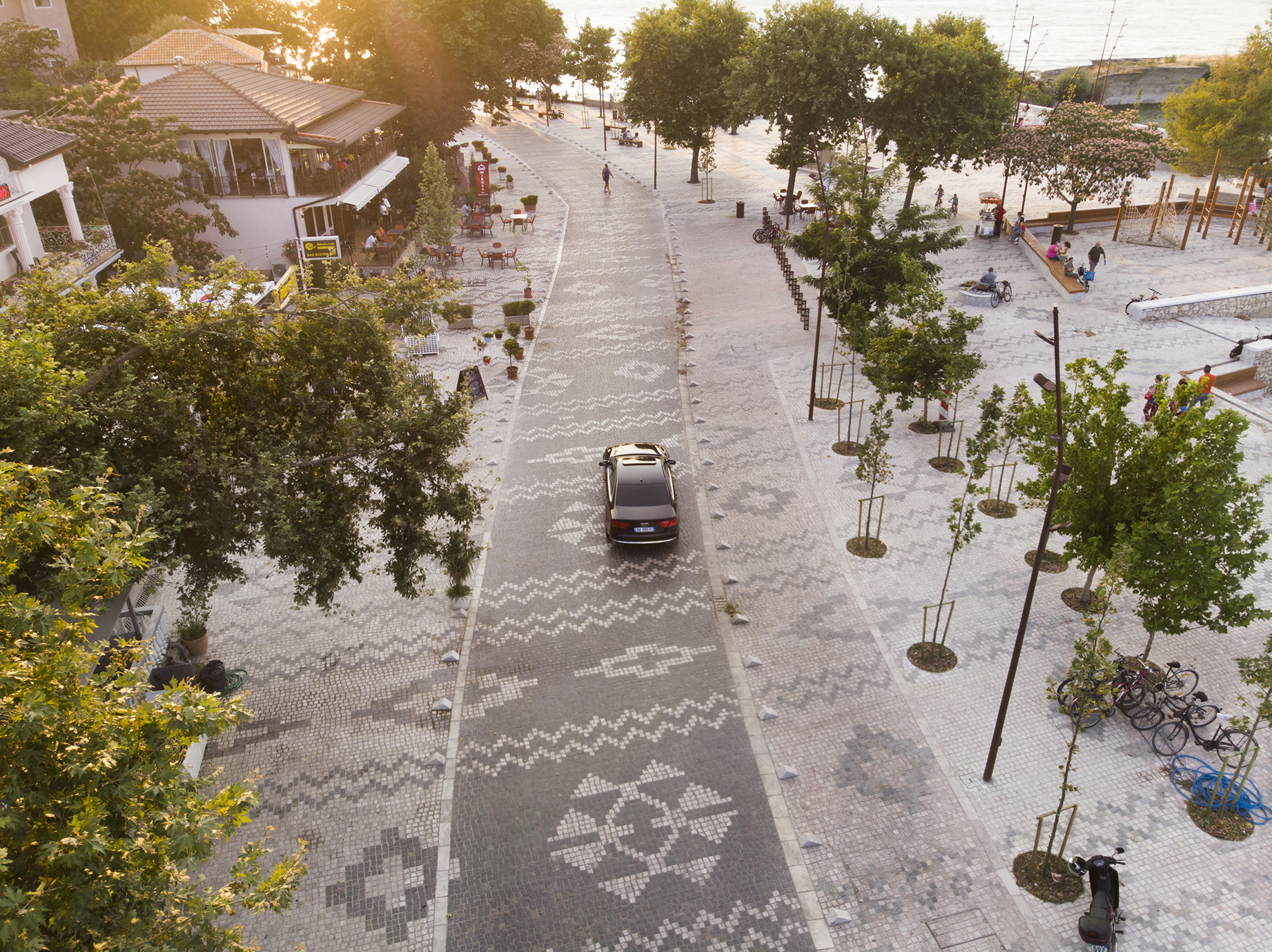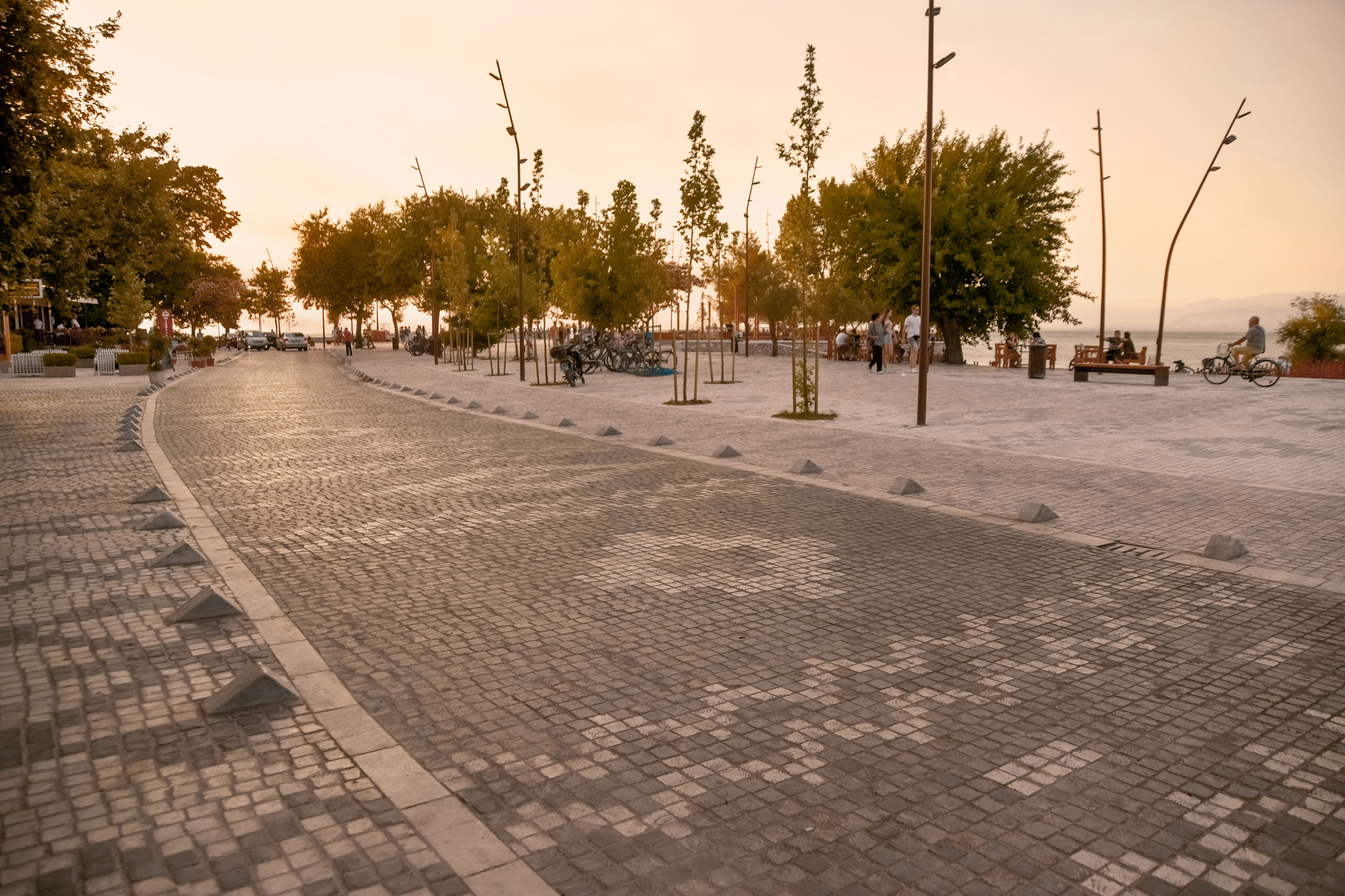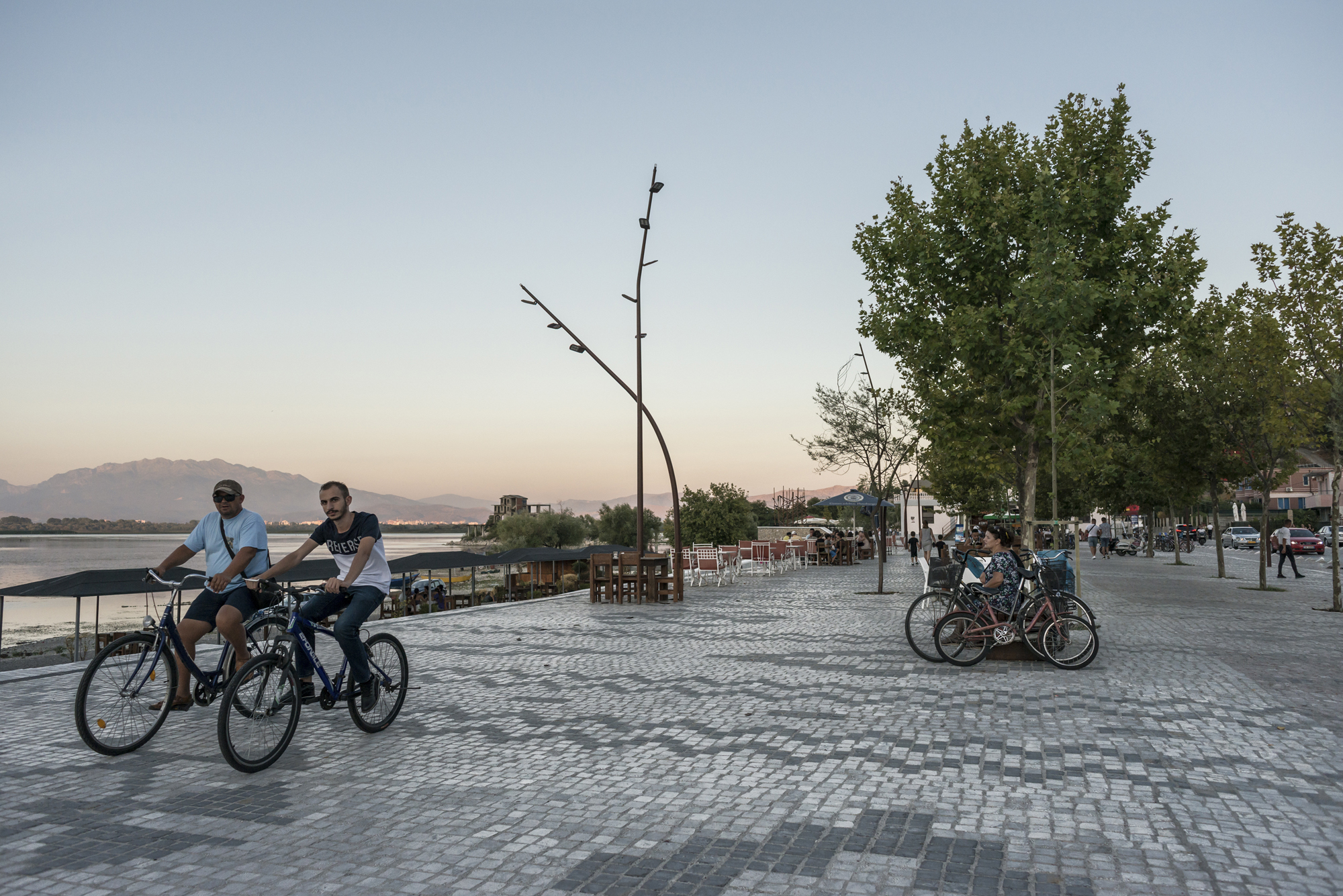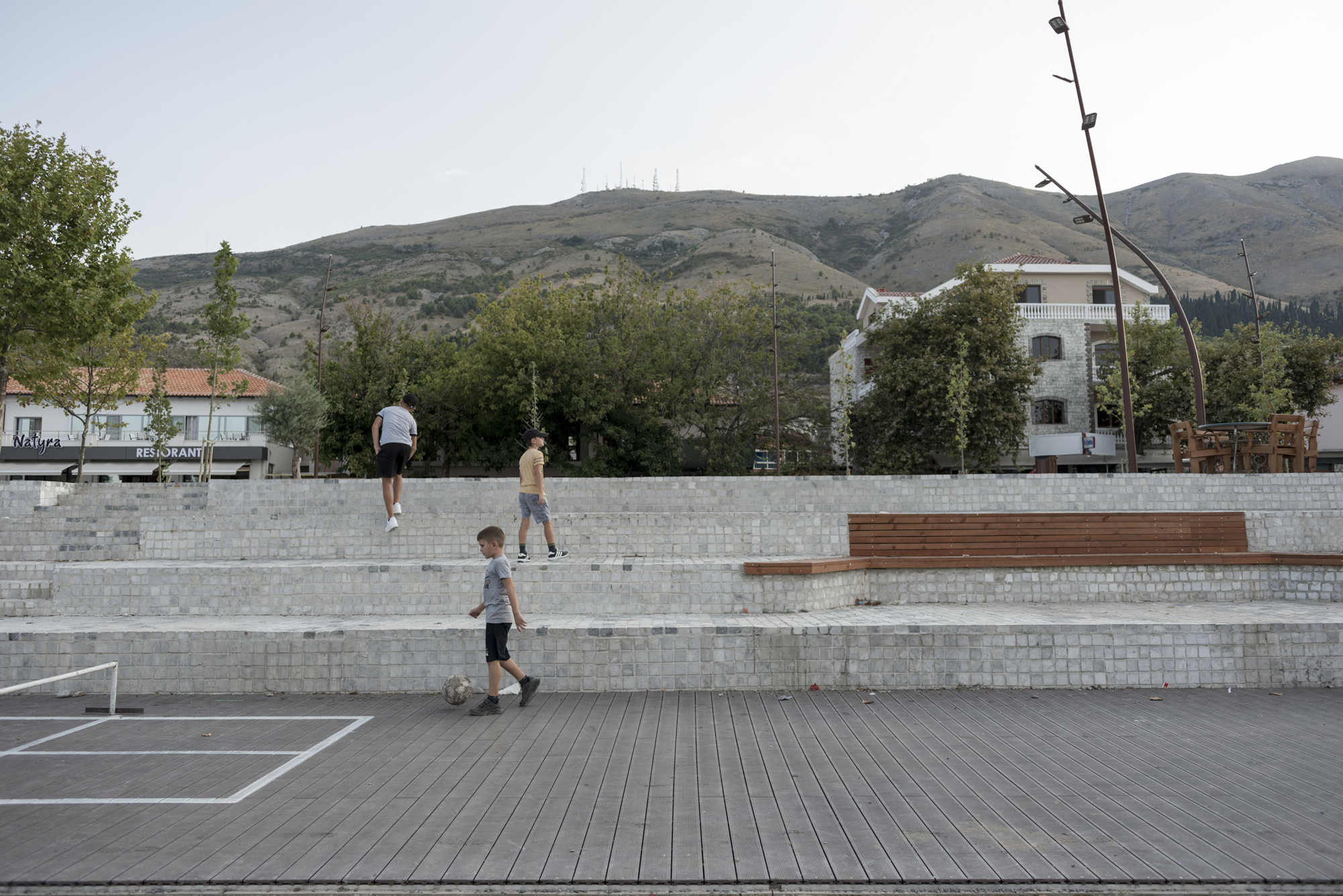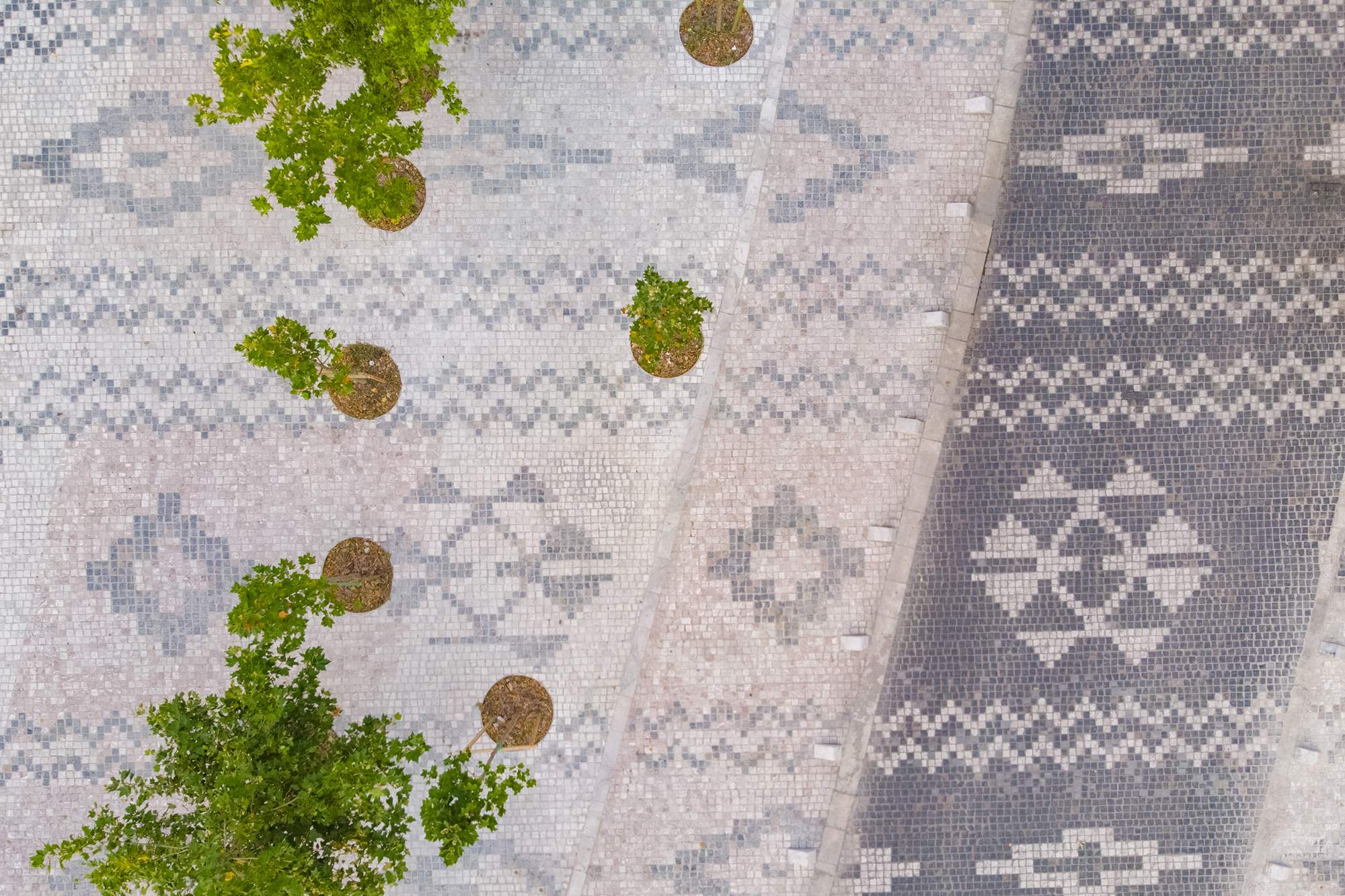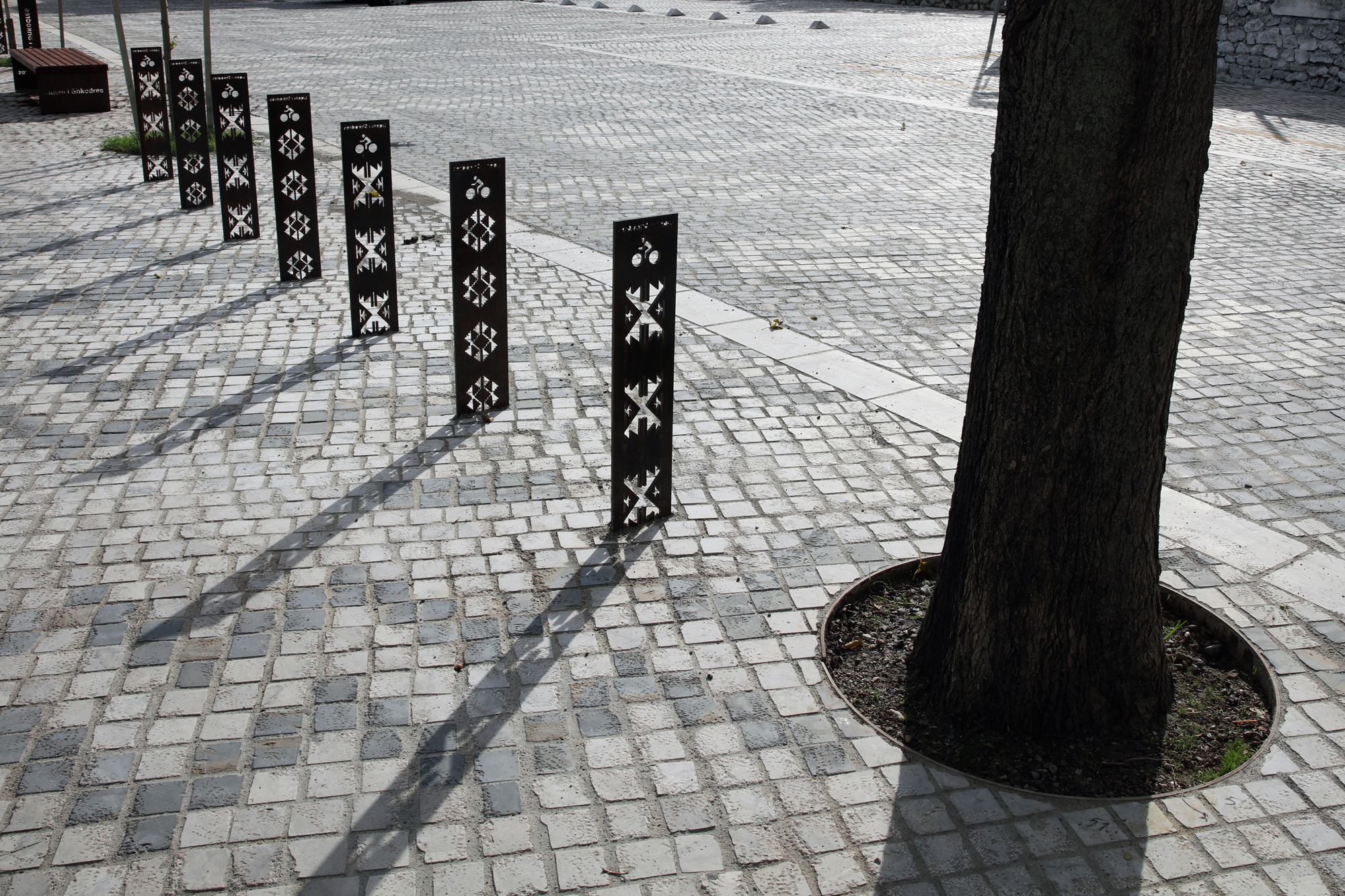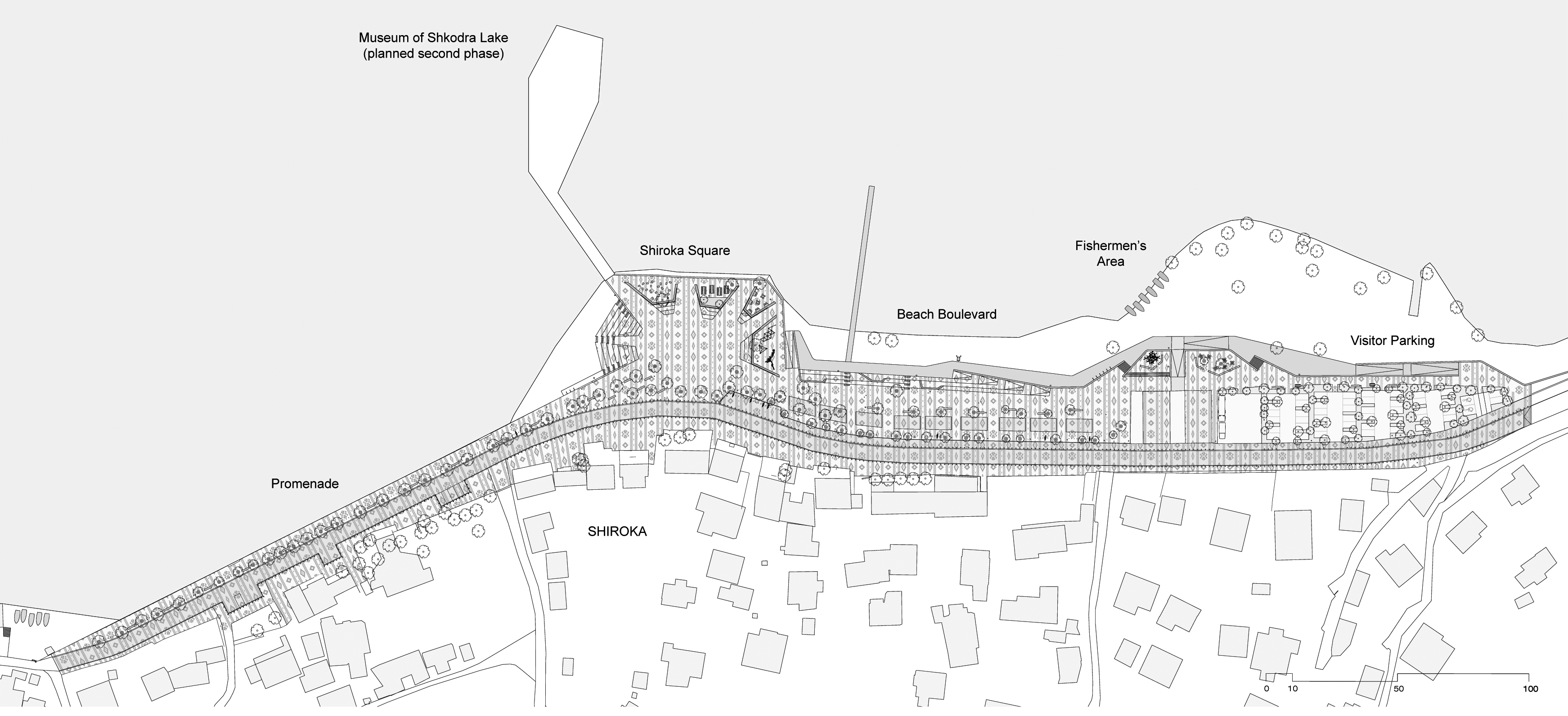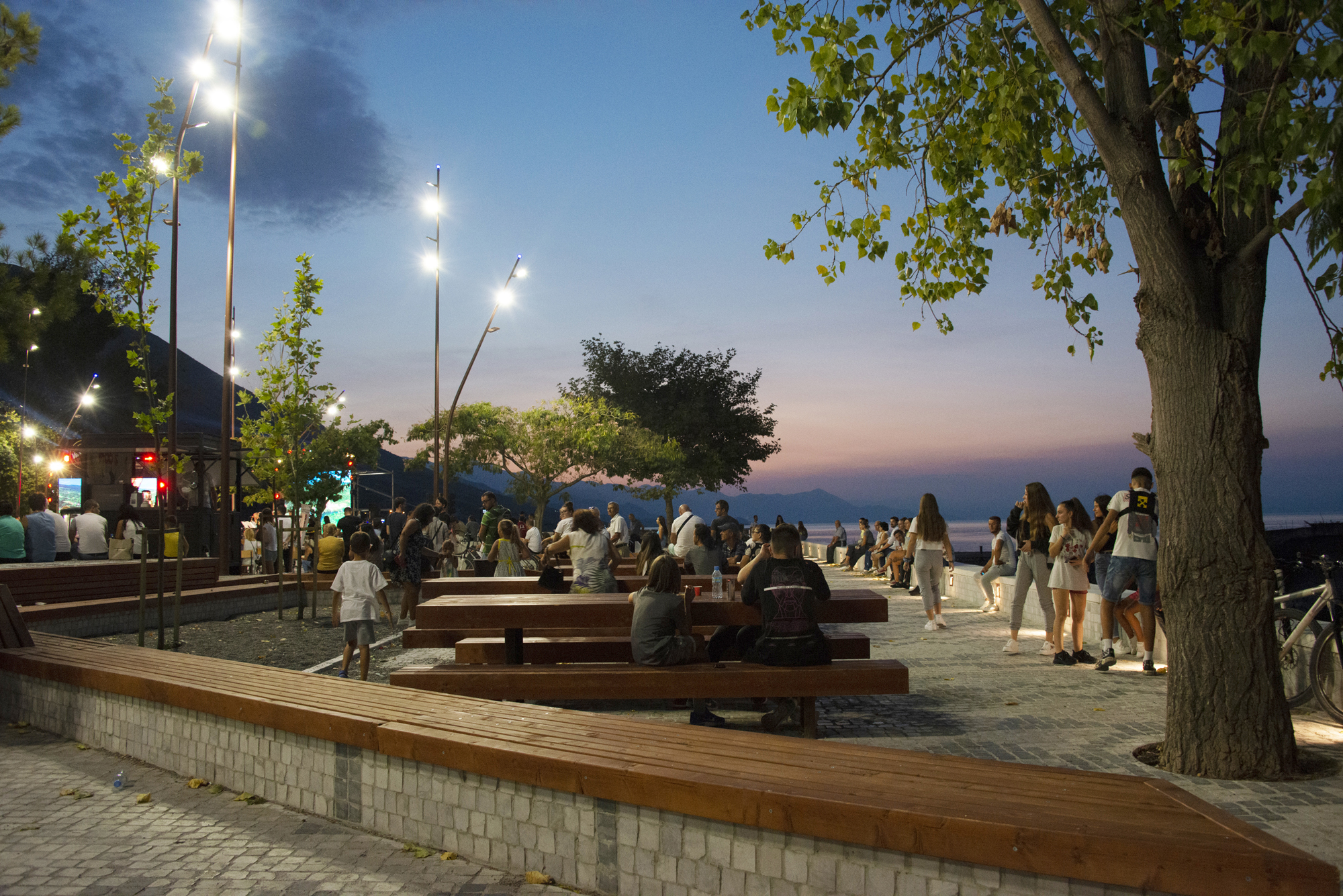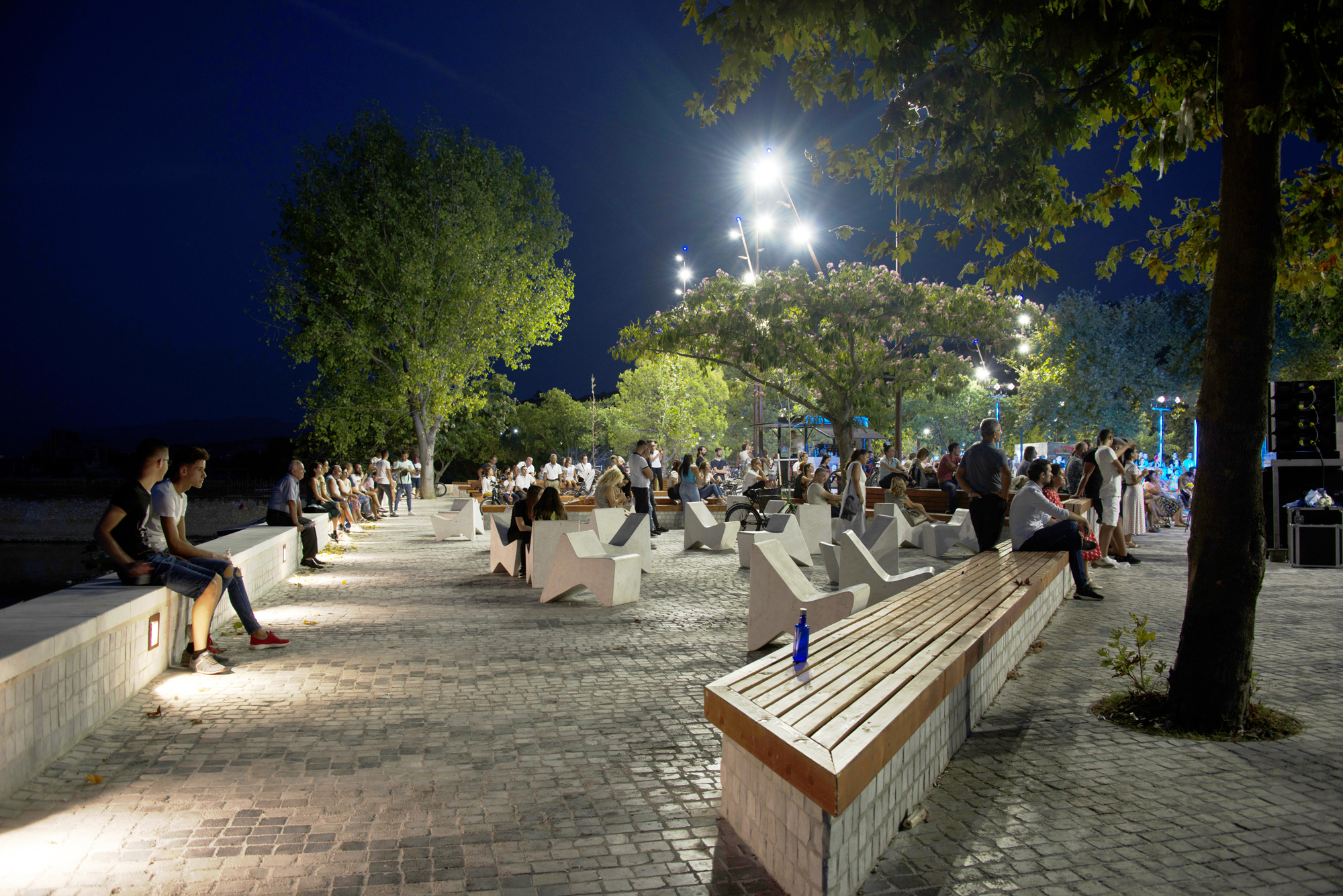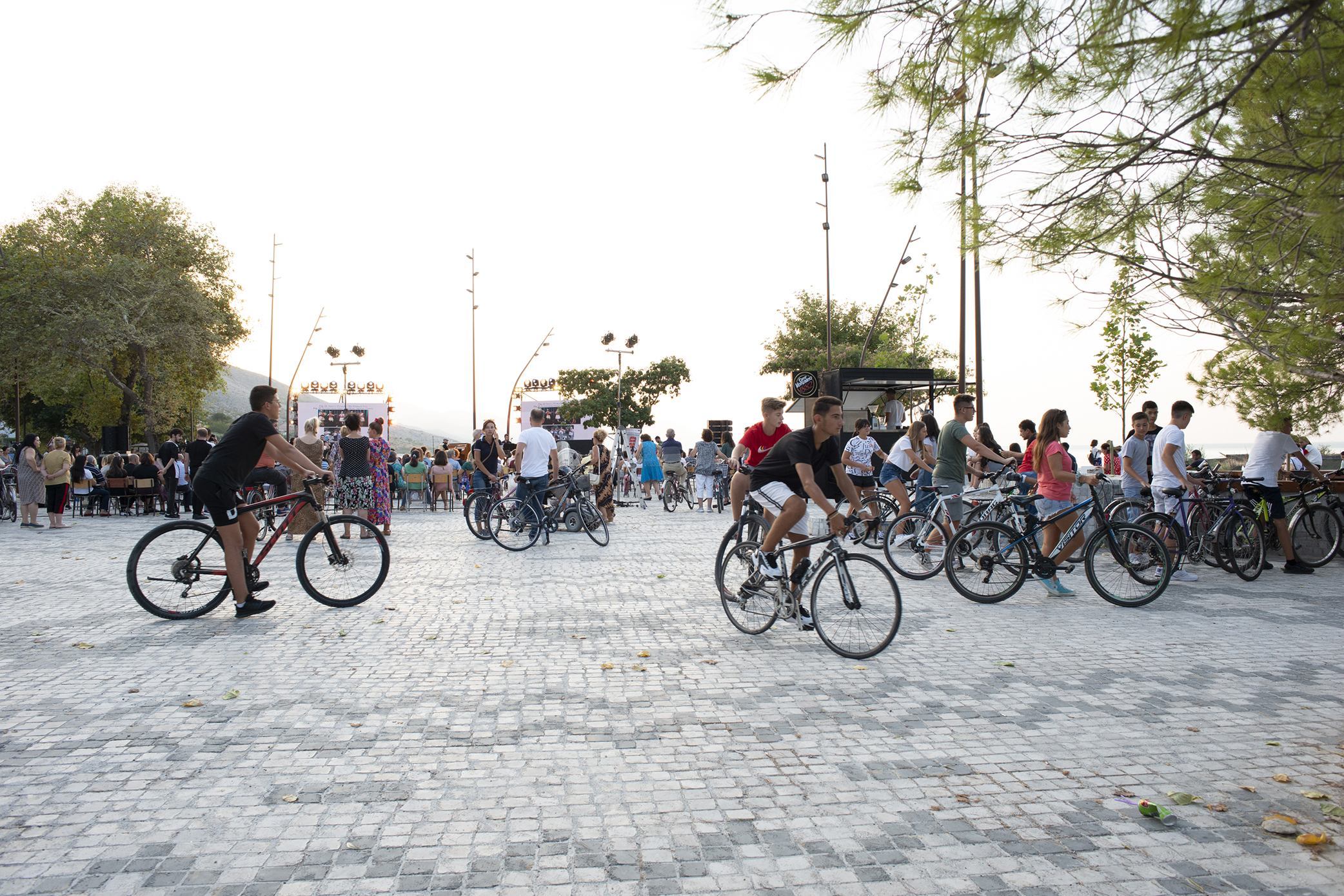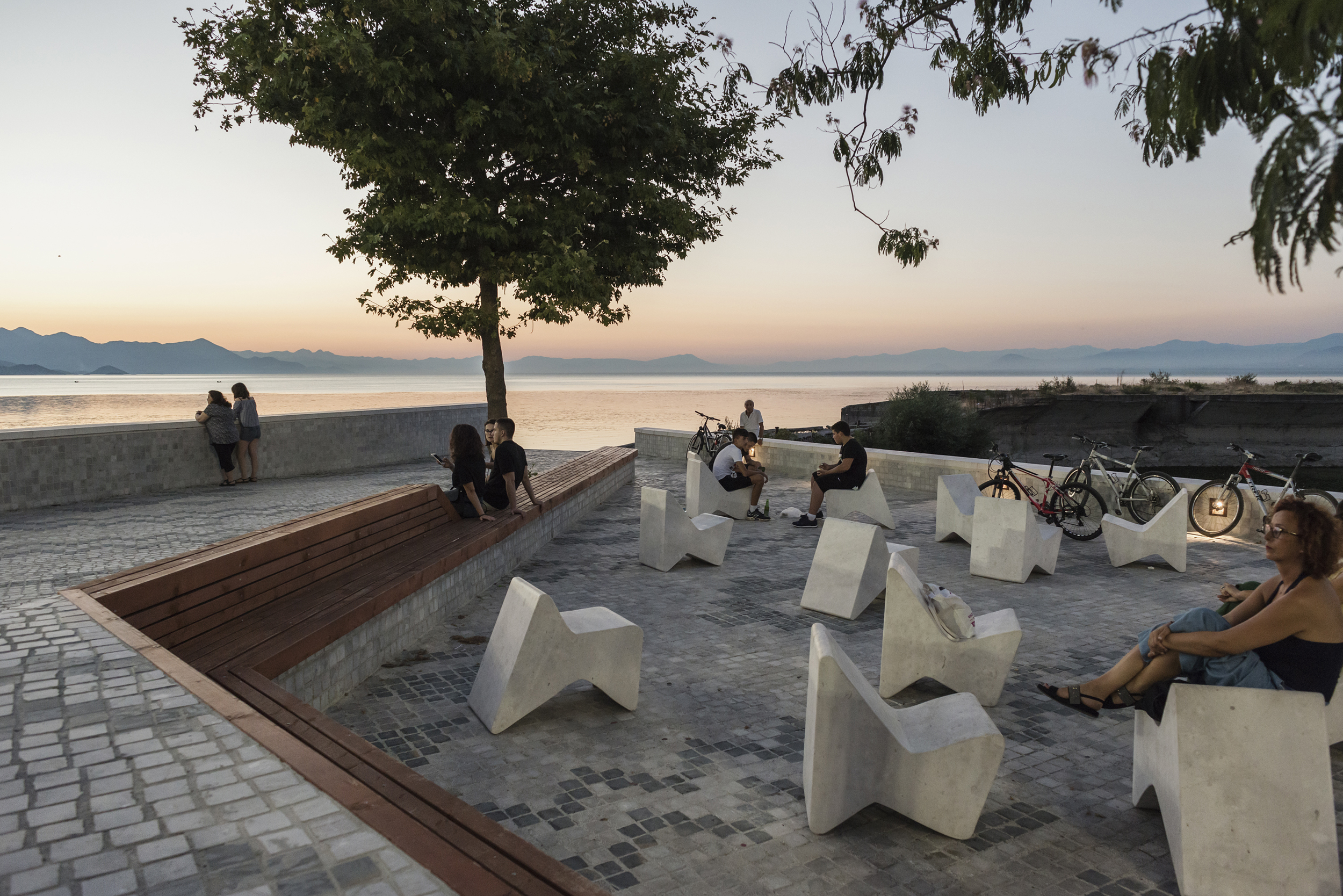Previous state
Shirokë is a fishing village on the shores of Lake Shkodra, near the border with Montenegro. For centuries, its inhabitants have been dedicated to fishing, productive gardens and carpet weaving. The communist regime deprived citizens of earning a living off traditional “private” activities. Then, with the fall of the regime, there was a widespread distrust of the public sphere, which led to a period of uncontrolled occupation and the privatisation of public space. As a result, the promenade along Lake Shkodra was filled with illegal constructions – private homes, restaurants, private parking lots, and kiosks. It was also overrun by parked cars, and the surrounding area was littered with rubble. There was no safe connection to the lake from the main road or from the houses in the village.
Aim of the intervention
The initial task was to regenerate the lake shore around Lake Shkodra. Following an initial phase of research, the proposal focused on improving the route along the perimeter of the lake with a pedestrian path and a bike lane. Later on, the brief was expanded to include areas along a circular route connecting the lake and the surrounding mountains.
The project is part of a plan covering 115 hectares to be built over the next few years. The objective is to completely reorganise the western shore of the lake following a strategy to recover all the natural green areas and beaches. This recovery includes creating new green spaces and recreational areas, not only on the lake shore, but also in the mountains, in addition to restoring a natural fishing port. A 10-kilometre circular path for pedestrians and bicycles will be created to link all these areas together, as well as new paths to connect the lake with the mountain summits.
The Albanian Carpet project is intended not only to restore the promenade around the lake, but also to restore a sense of belonging and connection to public space. In addition to connectivity, the project generates landscape interventions that will include an interpretative project dealing with the history, traditions and natural aspects of the area. A new museum and visitor centre will also be connected directly to the square, where visitors will find information on the flora and fauna of the area and will have access a public viewpoint to enjoy 360-degree views over the lake and the mountains.
Description
The new public space is understood like a large house formed by a series of open rooms inspired by the traditional Albanian room, characterised by a long, low U-shaped bench where families can sit, stretch out or sleep. These rooms open onto views over the lake and encourage citizen engagement with a variety of uses, including a playground, a picnic room, lounges, an amphitheatre, and the fisherman’s room.
The interior of the U-shaped rooms is made of wood, while the exterior is made of stone. The flooring, seats and steps are clad in black and white granite following the traditional pattern of Albanian carpets, creating a unique, domestic atmosphere for the space. Existing trees are integrated into the design, as are some newly planted small trees. The centre of the square, free from trees or urban elements, can be used for the celebration of public events. The lake promenade is transformed into a pedestrian plaza that limits the presence of vehicles; a new parking lot for visitors located at the entrance to the town invites visitors to proceed on foot.
Assessment
The Albanian Carpet project has become an outdoor living room for vulnerable groups, a safe and fully accessible area, while ensuring citizens have full access to the lakeshore. The public space fosters social interaction and promotes the local economy. Estimates show that more than 3,000 residents and 5,000 visitors make use of the new project each day, which is making a positive impact on daily life in the area and its economy. Throughout the year, a wide variety of recreational activities are held, especially during the warmer months, including open-air cinema, concerts, children’s activities and even political rallies. Citizens and tourists of different ages come to the area by all means of transport – bicycle, car, bus and on foot – to gather and enjoy the spaces. Additionally, the new space re-envisions mobility, accessibility and social inclusion, while animal life expelled from the city is restored, and green areas are promoted. Several species of birds and other animals have re-colonised part of their former habitat thanks to the restoration of vegetation and the restriction of cars in the area.
[Last update: 15/11/2022]


